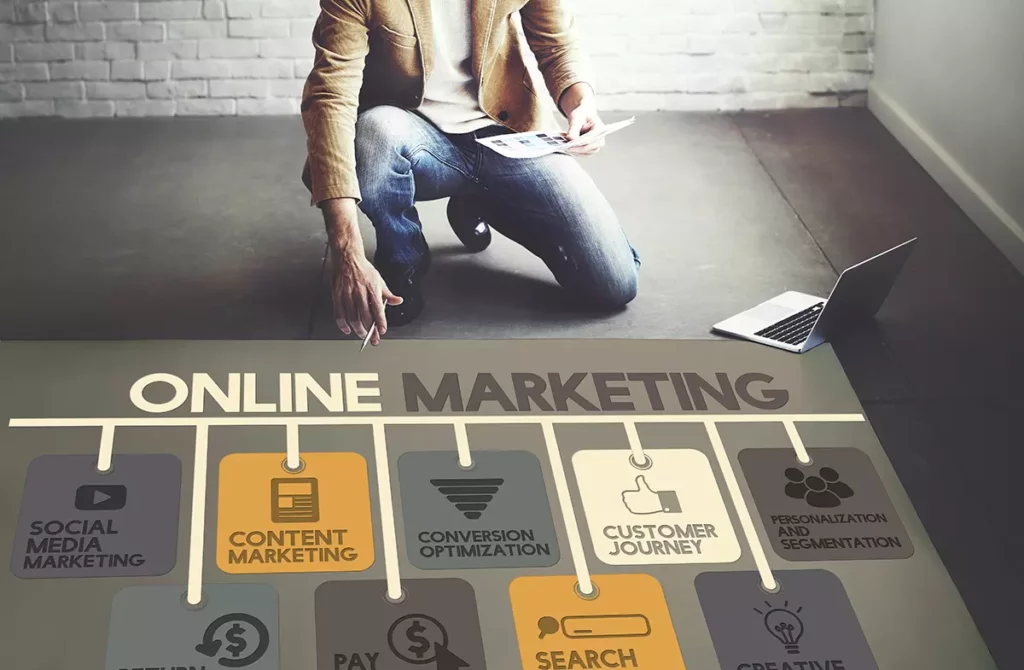No products in the cart.

The average attention span in 2015 was said to be 8.25 seconds (Wyzowl), that’s even shorter than a goldfish! And I’m betting that it’s even lower than that now. So that means, dear marketers and business owners, that our marketing strategies need to be more effective; we need to be really creative when it comes to holding people’s attention. And what holds people’s attention nowadays better than the consumption of media and pop culture?
Pop culture marketing is essential nowadays as a way to grab attention, engage with your audience and soft sell your products and services. But how can you do it? We’ll get into that, but first, there are some things you need to know before you get started.
Why is Pop Culture Marketing Important For You?
1. Give Your Brand ~Personality~
In this corporate, capitalistic world, you want your business to feel more human and approachable. Show personality and warmth, make your values seem close to your heart; your customers will find it much more appealing. I’m not going to lie, no one really likes big, distant corporations that only care about their profits. My advice? Don’t be like them.
2. Be Relatable
Your goal? You need to be #relatable! So when you are both true to your own brand values and message and also tied pop culture into them, your audience is more likely to engage with you and increase loyalty. And those who didn’t know of you before are now thinking, “Wow, I should check out this business!” After all, your audience follows you for a reason and that reason is because they relate to your business values and products. So try to relate back to them!
3. Understand Your Customers (and Form a Bond)
What’s the first thing you need to do when creating content? You’re going to have to tailor your pop culture topics to your audience, of course. And that requires knowing and understanding them. Hence, pop culture marketing gives you the right motivation and opportunity to do proper audience research. Find out what their likes, dislikes, interests, lifestyles, goals and preferences are, and use that information to reference pop culture topics that will appeal to them. And not only that, this helps you optimise your entire marketing strategy towards your active customer base. That way, you build a better bond with them.
4. Get Your Content Seen
Visibility; that’s what you want for your business on the Internet. With so much content and so many businesses vying for attention, how do you get seen? Well, it’s definitely not by showing no interest in what’s happening in the world. Jumping on the bandwagon lets you participate in trends and gain visibility through your content. With a proper marketing strategy, that visibility can be pulled on to direct traffic to your own online (and offline) platforms.

Before You Get Started…
1. Know Your Brand
It’s not feasible (or reasonable) to follow every pop culture trend. There are going to be some topics that appeal more to your own brand direction, values and maybe even products or services. Make sure your content resonates with your business. It’ll pay off more than just any random content you could create, trust me.
2. Know Your Audience
As we mentioned previously, you need to know your audience and their online and offline preferences. This helps you create content for pop culture marketing that they are familiar with and enjoy.
3. Pop Culture Is More Than Just Movies & TV Shows
When you think of pop culture, you’ll probably think of movies and TV shows. But it’s not just that! Pop culture includes music, literature, games, memes, fashion, cyberculture, celebrities and more. Basically, anything that is popular, gets attention from a vast audience and has content created around it.
Or if we’re heading into the deeper end of pop culture, it also includes social issues and movements, current events. This is where you have to show your audience that you care about the world, them and the real things they care about. It’s not all fun and games, unfortunately.
How Can You Use Pop Culture in Marketing?

1. Memes
Ranging from animals, songs, phrases or sentences, art, memes can be made up of just about anything. Some of them can be understood in an instant, others need 15 minutes of backstory, and others still are easily recognisable even when completely distorted or simplified. One type of meme to keep an eye on are the ones that seep outside of online funny bits, and into the way people speak and interact with each other. All in all, memes are a great way to engage with your audience using the kinds of content they enjoy.
2. Trending Topics
What’s currently trending? It’s not just about Keeping Up with the Kardashians, you also need to keep up with trends and current pop culture references. The world moves quickly, so don’t think you can plan ahead. One moment, something’s trending and the next, it’s gone so you’ll need to be prepared to create content in real-time.
Of course, that doesn’t mean you should always focus on trending topics. Keep your audience in mind when creating your content, and choose what they will want to see. Evergreen shows, movies and games can also make great content.
3. Get Hyped With the Crowd
Fandoms rise and fandoms take over. Whether it’s a new show, movie or celebrity, there’s always something that people will be talking about. And that’s when you can up your marketing strategy, by jumping on the hype train and incorporating these viral successes and fandoms into your marketing. This again relates to trending topics and how you can tap into new areas of content for your own business.
4. Is That A Real Holiday?
Real holidays like Chinese New Year, Hari Raya, Deepavali and Christmas are all well and good to celebrate and use for themed marketing campaigns. But unofficial holidays also provide opportunities to have a little fun with your marketing. Some examples include National Pizza Day, World Poetry Day, Best Friends Day and World Smile Day. They give a little bit of life to each day, making it special.
And the great thing about it? You don’t even need to be a part of that particular industry to talk about it! Post on your social media, create a small one-day promotion or just interact with your audience on these special unofficial holidays!
Psst! HubSpot has a great list of social media holidays you can use!
5. Current Events
News around current events – social, environmental, political – have widespread coverage, even more so with social media. Creating a campaign surrounding a piece of news can help your business get more attention and reach interested followers. A dedicated hashtag is useful to increase reach on social media platforms because news-like hashtags are often used to discuss the related issues.
Tip: Choose your news cautiously, make sure your message is meaningful and capture both your and your audience’s values appropriately.
Conclusion
It’s not enough to just wing it. Pop culture marketing is not super easy; it requires creativity, dedication and the courage to take a stance on world issues. With so many people creating content, you need to be able to take an idea and create something different out of it. Moreover, it is essential for you to know your target audience to keep your brand relevant and valuable to them. But if done correctly, it could boost your digital marketing strategy. You may have a chance to go viral, engage with your customers and show them that you care about them.
Frequently Asked Questions (FAQ)
What exactly is Pop Culture Marketing?
Pop Culture Marketing refers to the use of current popular trends, events, and cultural phenomena in marketing strategies. It involves leveraging elements from popular media such as movies, music, television shows, and social media trends to create relatable and relevant marketing campaigns. The goal of Pop Culture Marketing is to connect with consumers on a personal level by referencing aspects of their daily lives, interests, and experiences, and make the brand or product more appealing and memorable.
What are the benefits of using Pop Culture Marketing?
Pop Culture Marketing offers several benefits, including:
– Increased brand recognition: By incorporating popular cultural elements into marketing campaigns, brands can increase their visibility and recognition among consumers.
– Improved audience engagement: Pop Culture Marketing creates a more relatable and engaging marketing message, making it easier for brands to connect with their target audience.
– Boosted brand appeal: By leveraging popular trends and events, brands can appeal to a larger and more diverse audience, increasing the potential for growth and success.
– Increased social media presence: Pop Culture Marketing often generates significant buzz on social media, increasing a brand’s online visibility and reach.
– Increased brand loyalty: Pop Culture Marketing helps build stronger emotional connections with consumers, which can lead to increased brand loyalty and advocacy.Overall, Pop Culture Marketing offers brands the opportunity to connect with consumers on a personal and emotional level, resulting in improved engagement, recognition, and loyalty.
Was this article helpful?
YesNo


